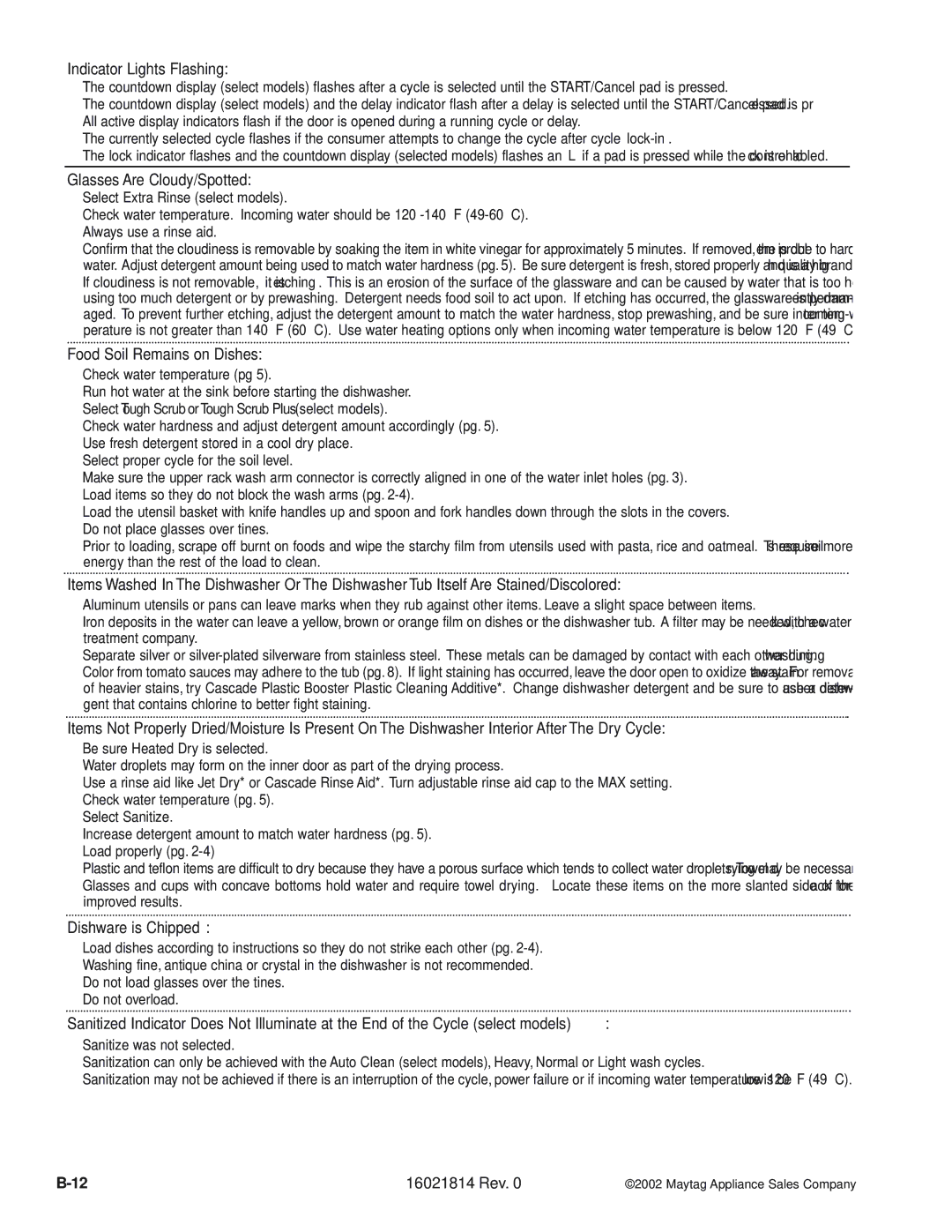MDB5600AW, MDB6600AW, MDB7600AW, JDB4000AW, MDB8600AW specifications
The Maytag MDB7600AW, MDB6600AW, MDB8600AW, MDBF550AW, and MDBF750AW dishwashers combine power, efficiency, and innovation, designed to tackle tough stains while providing user-friendly features. Maytag is known for its strong performance, making these models popular choices for homeowners seeking reliable dishwashing solutions.Starting with their cleaning capabilities, these dishwashers are equipped with the PowerBlast Cycle, which utilizes high-pressure jets to remove stubborn food particles, ensuring that dishes come out spotless. The dedicated scrubbers can handle baked-on messes and pet food debris, making them ideal for busy households.
Energy efficiency is another strong suit of these models. Many of the dishwashers feature the Energy Star certification, indicating they consume less water and electricity without compromising performance. This not only helps reduce utility bills but also contributes positively to environmental sustainability.
The capacity of these models is thoughtfully designed to accommodate a wide variety of dishware. With adjustable racks and ample space, users can easily fit pots, pans, and large platters. The MDB8600AW and MDB7600AW offer a third rack for extra loading flexibility, allowing for more efficient use of space.
In terms of reliability, Maytag emphasizes durability with their stainless steel tub, which resists stains and provides long-lasting performance. Furthermore, these dishwashers come with a 10-year limited parts warranty, giving users peace of mind regarding any potential issues.
Technologically, the models are equipped with smart features like a soil sensor that detects how dirty the dishes are and adjusts the wash cycle accordingly. The Quiet Series technology ensures that operations remain quiet, allowing for a peaceful home environment while the dishwasher is running.
The exterior of these models is sleek and modern, available in various finishes to match different kitchen decors. With intuitive controls and various wash cycle options, users can select the ideal setting for their dishwashing needs, from quick washes to heavy-duty cycles.
In summary, the Maytag MDB7600AW, MDB6600AW, MDB8600AW, MDBF550AW, and MDBF750AW dishwashers are designed for consumers who value efficiency and powerful cleaning. With high-performance features, energy savings, capacity for large loads, durability, and advanced technology, these dishwashers are a strong choice for any kitchen. Whether tackling everyday dishes or more challenging messes, Maytag continues to deliver exceptional cleaning results.

